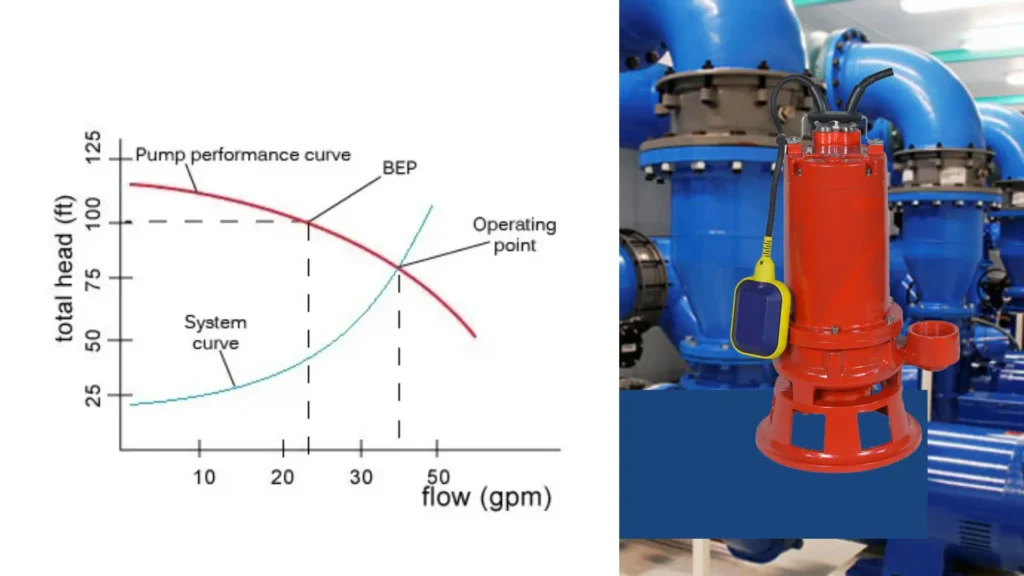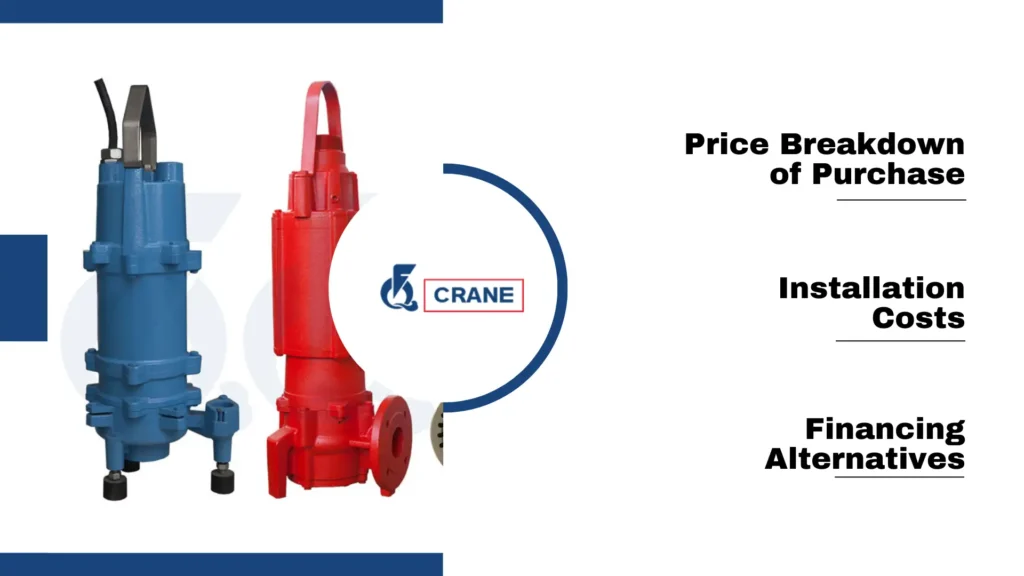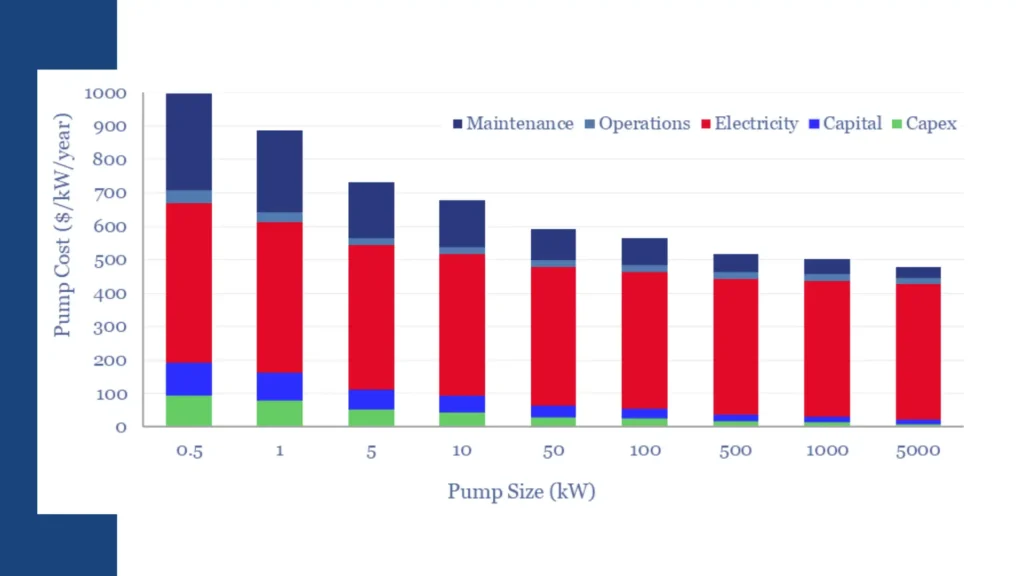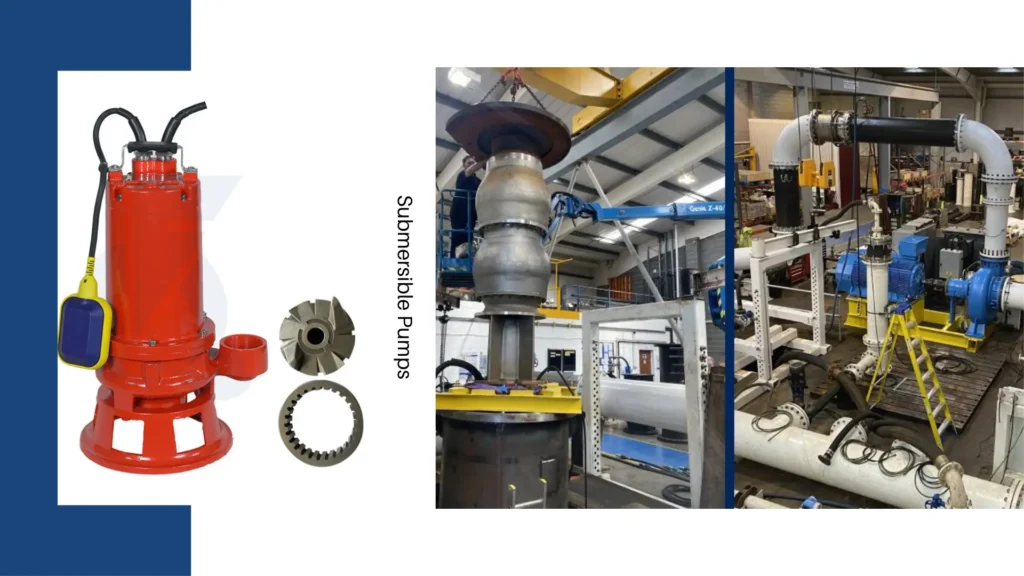Submersibles are specialized pumps that can operate while completely submerged in the liquid medium.
It is designed for maximum performance under all conditions to ensure that municipalities meet the requirements necessary to give reliable services to their residents in terms of water.
The primary intent of this paper is to furnish a straightforward, easy-to-read overview of the relative costs and benefits of submersible pumps in municipal systems.
By examining the cost and operational benefit of inserting submersible pumps in water management strategy within any municipality, this guide offers decision-makers enough information needed for the wise choices in integrating submersible pumps.
Types of Submersible Pumps

Different Types Overview
Submersible pumps are classified into several types based on specific applications.
Sewage Pumps
These are units designed for handling sewage and wastewater. They also take care of solid waste and debris; therefore, they are an essential part of any municipal sewage system.
Drainage Pumps
They are also used on construction sites or during floods. Drainage pumps are used to remove excess water to prevent damage and guarantee safety.
Deep Well Pumps
The deep well pump is a type of submersible pump. They are very best pumps for the groundwater extraction process in basement well water areas since they penetrate deep into the ground, over 25 feet.
Selection Criteria
Several things must be taken into account when purchasing the best submersible pumps for a specific application. For instance:
And More:
Choosing the Right Submersible Pump for Waterworks
Flow Rate
Measured in gallons per minute (GPM), the flow rate informs the amount of water that can be moved for pumping. This aspect is crucial to knowing whether a pump can meet municipal demands.
Head Height
Maximum height at which water can be lifted by the pump. It is important in terms of applications where water will be taken to elevation.
Material Composition
The material used in constructing the pump is often evaluated based on environmental conditions regarding the durability, capability to withstand the present corroded water conditions.
This was especially necessary where the type of water conditions was rough.

Outdated Development in Pump Technology
Pumps are advancing by a good margin in the technological changes that have recently occurred towards pump construction, such as submersible pumps. They are as follows:
Variable Speed Drives
This modification allows pumps to vary their speed by on-demand load so as to enhance the energy performance and cost-effective operations.
Smart Control Systems
These control systems automatically monitor and control in real-time the operations of pumps, therefore enhancing operational efficiencies, and mostly reduce the occurrence of failures that might happen in the course of using these systems.
Pump Motor Designs
Such new motor technologies significantly improve efficiencies to harness lesser energy, thus making pumps greener.
Initial Investment Costs
Price Breakdown of Purchase
The base cost of purchasing submersible pumps greatly differs depending on size, capacity, and technology.
Municipalities should prepare for a range of costs to choose pumps that fit their operational demands but will fit their budget.
It’s the understanding of the part of purchase prices that buff up the informed decisions and save them from shock expenses.
Installation Costs
Installing submersible pumps incurs not only the cost of the pump, but paid labor and any pertinent infrastructure adaptation as well.
Since this kind of installation requires skilled labor, the cost goes up.
The municipality should, therefore, include these components when budgeting for installation of the pumps to ensure that sufficient resources are allocated toward the successful completion of the installation.
Financing Alternatives
Municipalities can consider various financing options to support the burden of upfront expenditures, such as:

Grants
Many state and federal environmental agencies offer grants for water-related projects, which can greatly reduce initial costs.
Loans
The amount needed to buy and install submersible pumps can be made possible by low-interest loans, which will hardly affect the budget of the municipality.
Public-Private Partnerships
These partnerships bring extra funding, expertise, and assistance in acquiring and using submersible pumping systems.
Long-Term Operational Costs
Energy Efficiency
Submersible pumps are typically more energy efficient when compared to the more conventional surface pumps.
They are built to run under lower levels of input energy and hence save loads of money in utility bills.
Therefore, municipalities should compare the energy consumption of various models of pumps to select options which will reduce running cost and the entire carbon footprint of the community.
Maintenance and Repair
Routine maintenance is very essential for the lifespan of submersible pumps.
Regular inspections and service would help avoid costly repair as well as downtime.
Municipalities should come up with the necessary maintenance schedule like wear and tear check, cleaning, and restoration of components to have a constant performance and reliability.
Lifespan Considerations
It varies widely: submersible pumps do exist to last for years or many years if they are cared after well.
Operating environment, manner of maintenance, and quality of pump play a part in determining its lifecycle.
Understanding such factors will serve as a guide to municipalities planning future replacements and financial budgets to maintain a functional water management system for long term.

Operational Benefits
Reliability Fortified
Submersible pumps are designed to provide reliable performance even under extreme conditions.
With ability to function redound while submerged, installations are done in complete protection for any anticipated mechanical failures.
They are perpetual input requirements for their roles as supplying water for consumption or using as a sewer.
Therein lies the promised presence for a greater public acceptance of municipal facilities in water supply.
Space Efficient
Submersible pumps take up space and are hence the most ideal installation method in limited areas suited for urban environments that do not really offer more land.
The improvements thus achieved by a municipality can be made in infrastructure optimization without extensive renovation or land acquisition.
Noise Reduction
One of the advantages, perhaps the greatest, of a submersible pump is that it operates silently.
Above-ground pumps can create a great deal of noise pollution, but installation of a submerged pump keeps that noise inside the well, away from residential areas.
Environmental Advantages
Sustainability Benefits
Submersible pumps are proven and tested to foster sustainability through energy efficiency and water wastage reduction.
It matches the larger environmental agenda of resource conservation and reduction of the ecological footprint of municipal operations.
In this regard, submersible pumps can be effective instruments for municipalities to demonstrate their commitments to sustainability and responsible resource management.

Pollution Prevention
Wastewater management using submersible pumps provides opportunities for minimized chances of contaminating water sources.
They are effectively used to carry wastewaters for treatment in waste treatment facilities, thus ensuring that pollutants are treated before reaching the environment.
It is essential for maintaining local resources for water and public health protection.
Regulatory Compliance
Municipalities must comply with various environmental requirements concerning water quality and management practices.
Thus, submersible pumps will play a role in meeting these regulatory provisions resulting from their effective systems of wastewater treatment and reliable water supply systems.
It not only protects health but also brings good reputation to the municipality in resource stewardship.
Benefits of Submersible Pumps
Effectiveness and Activity
Submersible pumps are generally advanced in their working efficiency and performance for different activities.
Their capacity to work underwater is well suited for water supply and wastewater applications; such installations are expected to reduce energy consumption and improve service delivery by municipalities.
Space-Saver Design
The compactness of submersible pumps allows for flexible installation, even in very limited space of urban areas.
Such flexibility in the design will enable municipalities to maximize the efficiency of their water supply systems without losing the functionality of the system or making access to it impossible.
Reduces Noise Levels This has made life easier for many residents since submersible pumps also deliver quieter action and hence contribute to making a more pleasant living environment.
Noise Pollution reduced community satisfaction, reduced the complaint of residents regarding noise pollution, and made these pumps an appropriate option for application in urban areas.
Performance and Efficiency
Submersible pumps have been designed to achieve high efficiency or superior performance for different applications.
Their ability to run underwater adds to the effectiveness of their applications, whether it is related to water supply or wastewater.
A reduced energy use and better service delivery will be the result of a municipality when these pumps would be consolidated into those systems.

Longevity and Durability
Building Materials
Material of high standards used in the submersible pumps guarantees durability and resilient properties from adverse effects.
Such kinds of corrosion-resistant materials can withstand harsh conditions and, thus, reduce the need for regular replacements.
The robust pumps indeed ensure very large long-term savings for municipalities.
Corrosion Resistant
Almost all submersible pumps these days come with some feature that resists corrosion, especially when used in chemically treated or salty waters.
This way, the submersible pumps are assured of longevity and consistency in performance, making them a very prudent buy for municipalities.
Warranty and Life Span
Most submersible pumps come with a warranty with respect to the investment for municipalities.
A detailed understanding of such warranties would help municipalities ascertain the long-term benefit of the pumps and plan better maintenance and replacement needs for the future.

Also Read:
Exploring the Applications of Submersible Pumps in Waterworks
Conclusion
Advantages of submersible pumps for municipal systems include efficiency, reliability, and environmental characteristics with initial investment costs often proving steep.
Ultimately, however, long duration operation savings and other benefits associated with them warrant their consideration for improved water management.
Investing in submersible pumps actually enables a municipality to improve its water management capabilities.
The costs involved are highly outweighed than the understated efficiency and durability with which submersible pumps render performance, even in their environmental impacts.
For that reason, municipalities must recognize this efficiently and thus explore viable affordable options regarding investments into submersible pump usage in their systems.
Submersible pumps are the next step towards optimized water management systems for many municipalities.
Get in touch with us right now so we can start having a discussion about the possible application of our solutions in improving your community and water management efficiency.

